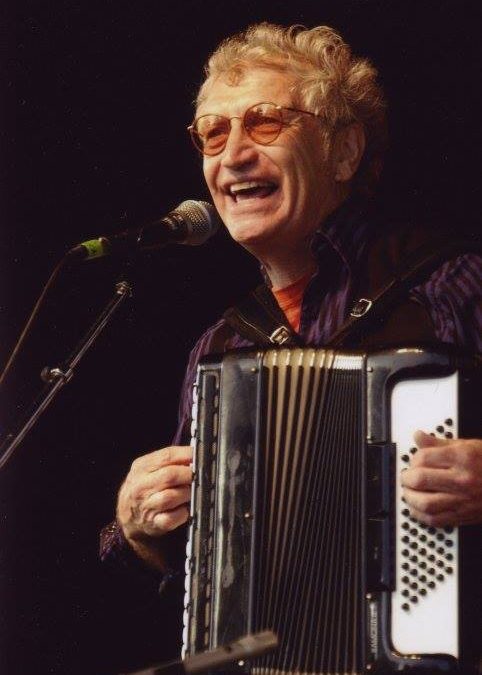Welcome to the fifth instalment of Monday #MusicMatters as part of the JAMS Canada PRO Series – “Here’s What I Know”.
We caught up with Tom Leighton about Arranging and Orchestrating
You can read Tom’s replies here below or hear his answers on our YouTube Channel:
Question 2; Who is your favourite arranger and why?
Question 3: What are the 3 main things when arranging?
Question 4: Do you need formal training to be an orchestrator?
Question 5: what are some of your tips for charting a song?
Question 6: Any other tips for orchestrating?
Who inspired you to want to arrange and orchestrate music?
My parents both loved swing music so there was way more of that style around the house and any other style. Benny Goodman, Artie Shaw, but most of all was the Glenn Miller Orchestra. Even from an early age I always appreciated how his arrangements could take a simple melody – like “In the Mood” and turn it into a piece that you never wanted to end. Great use of the band colours, dynamics and when it couldn’t possibly get more exciting Glenn would introduce a counter melody. Just thinking about it still gets me excited!
Another choice was The Beatles’ Sgt Pepper’s Album. They used interesting sound colours and counter melodies to make pretty simple melodies sound like nothing you had ever heard before.
Who is your favourite arranger & orchestrator? Why?
When I was still studying music and finally having the chance to play with a stage band (saxes, trumpets, trombones) we used to play a lot of arrangements by Sammy Nestico. He was the band leader for the Count Basie Orchestra and also the main US Marine Corps band. Really inspirational because they weren’t too hard to play, but always sounded amazing. They swung and were always really fun to play. The entire band would be smiling during the entire performance. What a gift to pass on that vibe through notes on a page.
A much more famous example is composer John Williams. His melodies are usually simple enough for most of us to whistle or hum along to, but thanks to his orchestrations he constantly introduces different instrumental colours and inner melodic lines so no matter how many times you hear his soundtracks, they never sound boring or predictable. What talent is that.
“To Arrange or to Not Arrange”
What are the main 3 things you think about when approaching an arrangement?
Job #1 for me when approaching an arrangement is to really listen to the basic song or tune. My object is what can I do as the song progresses to allow the melody to pretty well stay the same but add enough changes under it to keep the listener’s interest and also enhance the mood of the song. It also depends on using whatever colours are available – like the players in a band, or adding strings, or guitar colours.

Painting by Graham Metsen
Do you need formal training to orchestrate/arrange?
It is not essential to study those techniques, but it really helps. There are lots of rules to be aware of – like the range of various instruments, how they can blend together, where in each instrument’s range do they sound best for blending or standing out against all the other sounds for a solo. Listening to lots of examples of music is the best way to learn, and being able to try out ideas that you have. Some things will sound great, some will sound terrible. That is how you really develop your skills. Studying with good teachers help focus you so you can learn the most effective way.
Tricks of the Trade
What are some of your tricks for charting a song?
A good arranger knows how to write the music in the most friendly way possible. You want to make each players job as easy as possible to translate what you put on paper into a very musical and expressive performance. Those are tricks that come with experience. Another thing is not to have too many repeat signs and other things that might make the map look more complicated than it needs to be. A practical example might be: there are several ways to get to your house in the city. You know them all, but it might be easier to tell a visitor to take 3 main roads and 2 small ones to get to your street even if he/she drives an extra kilometre rather than tell them 1 main road and 10 small turns. Way more chance of them getting lost even though they might have saved a tiny amount of driving distance. Musically that could mean rather than using several repeat signs and a CODA sign, I would just spread the sheet music onto a 2nd page. That simple, but you would be amazed how many folks just don’t think of it.
Do you have any other tips in terms of orchestrating or arranging?
Much of the arranging that I have done involves writing music on paper for players who are not part of a constant band. They can read music and therefore add to the music really fast. It really cuts down on rehearsal time (which usually means having to pay out less money). BUT also keep in mind that any group of 2 or more musicians also do lots of musical arranging. LOTS. The biggest difference is that as part of a band they usually have lots of time to TRY OUT different ideas until they are happy with what they have done. That is a big part of the fun of being in a band. Simon & Garfunkel are a perfect example of arranging music for 2 voices and 1 guitar. Sounds so simple, but all their songs sound interesting and they made every syllable they sang count towards a great performance. It doesn’t have to involve a lot of musicians or even writing down music. A good arranger can make any piece of music or any band sound their best.
How are you coping with COVID 19?
Like most of us, these stressful and dangerous times always remind us of friends and family. It seems to me that most of the folks I have been in touch with or even listened to on various media have not been complaining about their own changes of routine and general lack of freedom. The prevalent thought that comes out first is a general thankfulness for the many blessings of their life. I am so proud and heartened by that.
I am no exception. My wife and I have been staying at our new place that looks across the Bay of Quinte into the mouth of the Trent River.
With the general absence of most deadlines we have had a very easy time coping with isolation. When not looking out the window (a major part of every day) and admiring with continuous flow of clouds, the Bay and the larger picture of nature, I have been blessed with being able to wander from instrument to instrument playing what ever comes to mind, plus time to develop music sketches that I keep in various notebooks. I have also set up a modest recording set up in a room to myself and have been working daily on a new collection of tunes and some songs. Normally finding time to do this has been difficult, as doing projects for others takes priority.
What a blessing that I continue to look at this crisis as a time of creativity. Like most musicians, when we finally get to play in public we won’t be rusty. We probably will be the most practiced on our instruments than any time in our professional lives. This will make the next phase of our musical lives even more exciting.
Meanwhile I continue to count blessings every day for the safety of our home, the beauty around us, family, and the friendliness that has blossomed with everyone standing in line ups or across driveways. A SHOUT OUT, of course the dedication of all the front line workers and supply folks who have made it possible for the rest of us to stay safe. While it’s been a time of stimulation for me, it has been a brutal battle in the trenches for so many. May I always feel this deep appreciation.
BIO
Multi instrumentalist, and indefatigable, Tom Leighton brings sophisticated colours and novel arrangements to his music that few musicians can match including playing three instruments at the same time!
As a solo recording artist, Tom’s “Leighton Tendencies”, and “Leighton Life”, are projects starring his own compositions and arrangements” …. featuring the writing skills and musical dexterity of this wonderful musician.” Whole Note Magazine. Tom also has three recordings as Mark Haines and Tom Leighton
He has written numerous arrangements for choir, band and even symphony.
Tom has worked with numerous artists and is a brilliant accompanist.
Look for Tom on his website Tom Leighton Music website and on Facebook @tomleighton
____________________________________________
Look for more JAMS Canada PRO Series “Here’s What I Know” Monday #MusicMatters here on our website and on Facebook, Twitter, Instagram and Linked In.
Some contributors also responded with videos – please subscribe to our JAMS Canada YouTube channel: https://www.youtube.com/channel/UC-CmaB7MV0r1ehhveBPmBEg


Trackbacks/Pingbacks